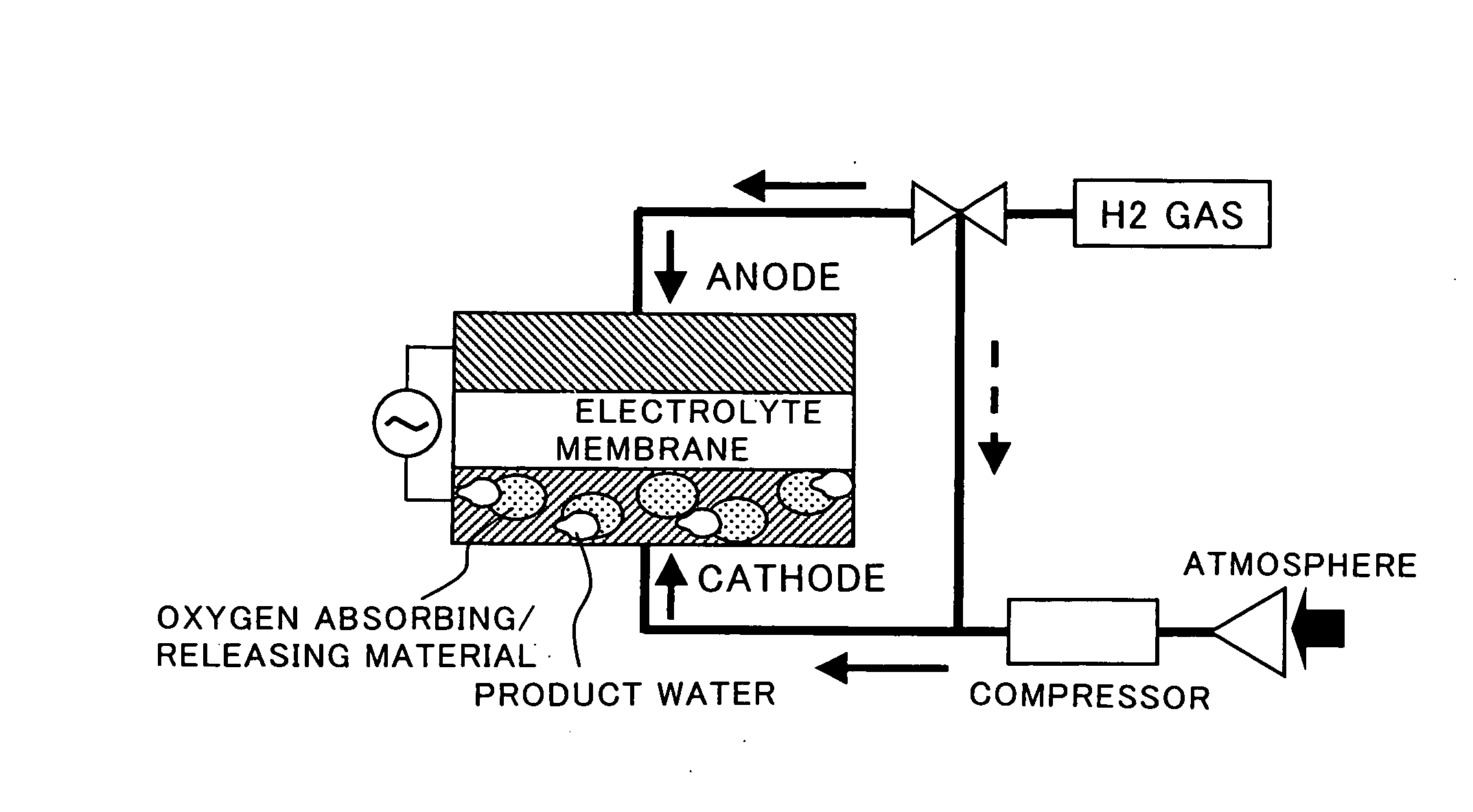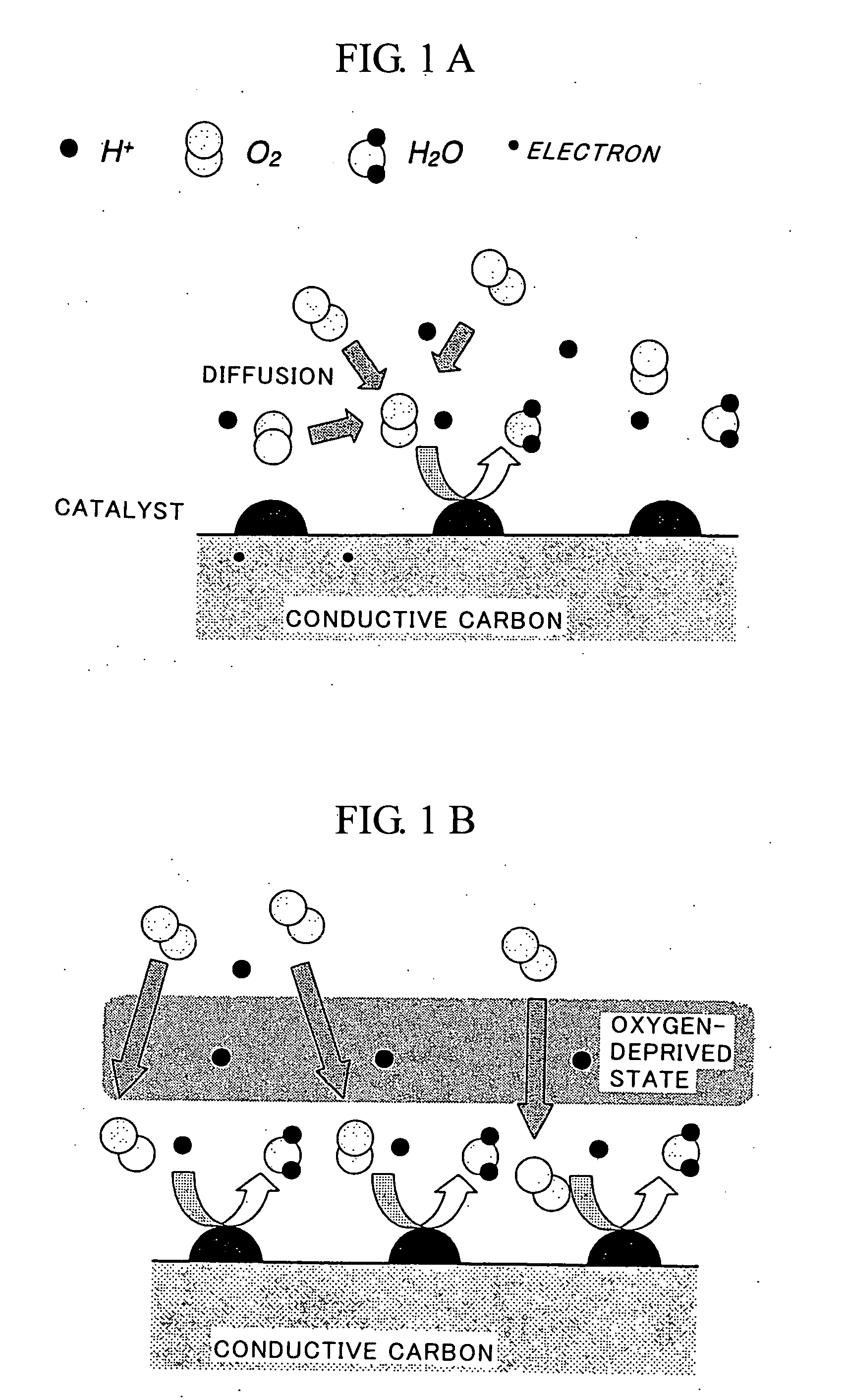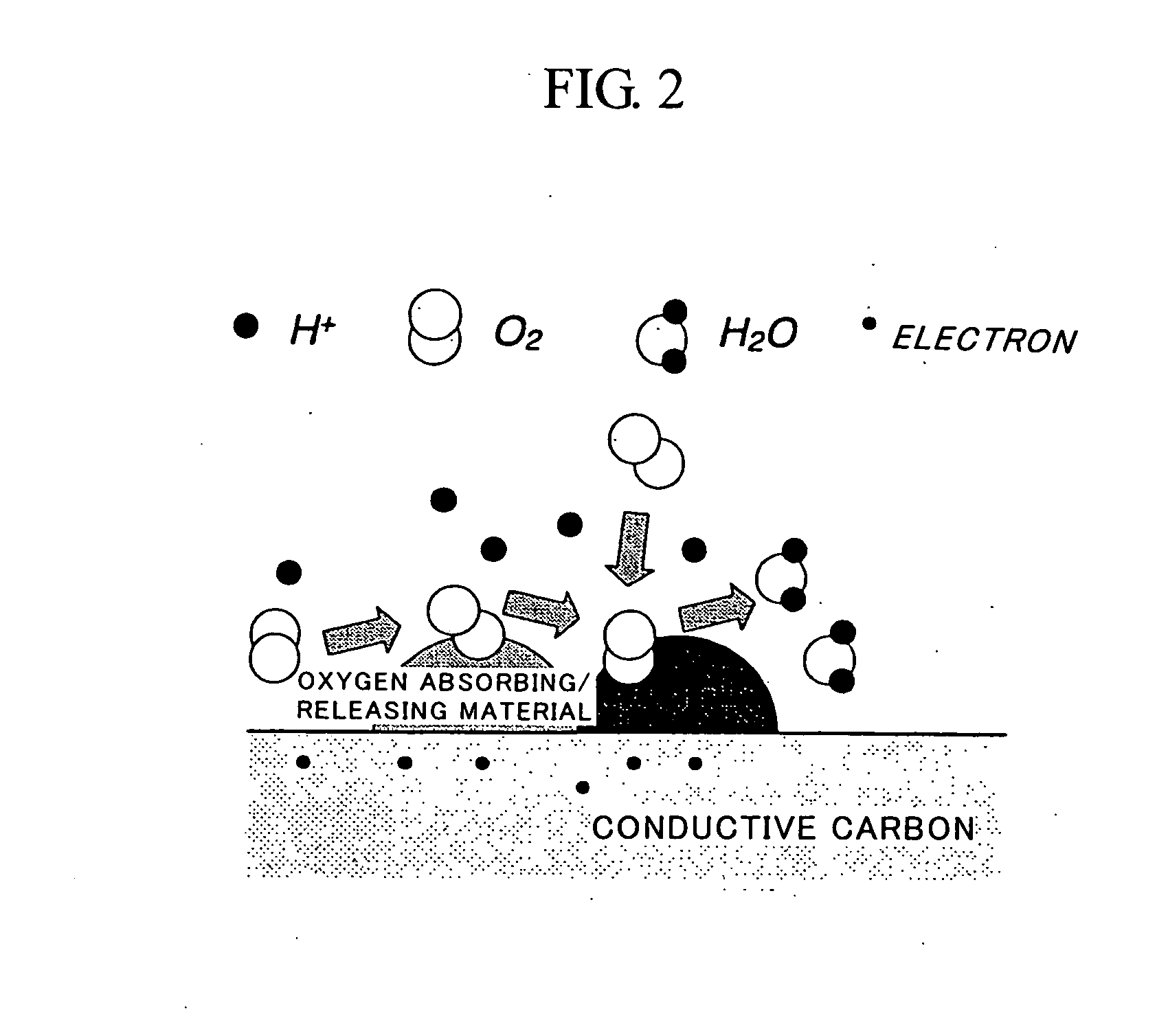Fuel Cell Cathode and a Polymer Electrolyte Fuel Cell Having the Same
a fuel cell and electrolyte technology, applied in the direction of fuel cells, solid electrolyte fuel cells, cell components, etc., can solve the problems of inability to fully exploit the performance of high oxygen permeability materials, difficult to guide oxygen to locations near the surface of catalysts, and inability to combine simple physical mixtures to allow highly oxygen-permeability polymers to exist near the three-phase interface in a concentrated manner. , to achieve the effect of excellent electrode characteristics, high battery output and superior durability
- Summary
- Abstract
- Description
- Claims
- Application Information
AI Technical Summary
Benefits of technology
Problems solved by technology
Method used
Image
Examples
example 1
Example 1
[0062]A CeO2—ZrO2 complex oxide was used as an oxygen absorbing / releasing agent. Printex XE2B was used as the carbon material, and for the platinum material, chloroplatinic acid was caused to be supported by the carbon by impregnation. A CeO2—ZrO2 complex oxide (20 wt. %) that supported 5 wt. % of Pt was mixed with the platinum-supported carbon, thereby preparing a catalyst.
example 2
Example 2-1
[0069]An electrode with a membrane thickness of 3 mil comprising a PtFe(60 wt. %)-supported carbon catalyst mixed with a Pt(5 wt. %)-supported Ce—Zr—Ox powder (20 wt. %) was prepared in the following procedure.
[0070](1) A Ce—Zr—Ox complex oxide powder was immersed in an aqueous solution of dinitrodiamine Pt complex, stirred, and then evaporated at 120° C. to dryness (5 wt. % of Pt contained relative to the powder).
[0071](2) After grinding in a mortar, the powder was baked in an atmospheric baking furnace at 500° C. for 2 hours, and the powder was again ground in a mortar.
[0072](3) A commercially available PtFe(60 wt. %)-supported carbon catalyst was mixed with predetermined amounts of ion-exchanged water, a Pt 5 wt. %-supported Ce—Zr—Ox powder (20 wt. % relative to catalyst), an electrolyte solution (Nafion), ethanol, and propylene glycol to obtain a catalyst ink.
[0073](4) After stirring the catalyst ink using an ultrasound homogenizer for 30 minutes, stirring was carried...
example 2-2
[0077]An electrode with a membrane thickness of 6 mil comprising a PtFe(30 wt. %)-supported carbon catalyst mixed with a Pt(5 wt. %)-supported Ce—Zr—Ox powder (20 wt. %) was prepared. This example is similar to Example 2-1 except for the substitution of a PtFe(30 wt. %)-supported carbon catalyst in step (3) and for the use of a membrane thickness of 6 mil in step (5).
PUM
| Property | Measurement | Unit |
|---|---|---|
| particle size | aaaaa | aaaaa |
| particle size | aaaaa | aaaaa |
| particle size | aaaaa | aaaaa |
Abstract
Description
Claims
Application Information
 Login to View More
Login to View More - R&D
- Intellectual Property
- Life Sciences
- Materials
- Tech Scout
- Unparalleled Data Quality
- Higher Quality Content
- 60% Fewer Hallucinations
Browse by: Latest US Patents, China's latest patents, Technical Efficacy Thesaurus, Application Domain, Technology Topic, Popular Technical Reports.
© 2025 PatSnap. All rights reserved.Legal|Privacy policy|Modern Slavery Act Transparency Statement|Sitemap|About US| Contact US: help@patsnap.com



